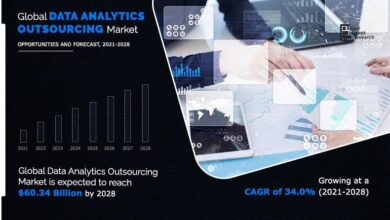Data Analytics
Exploring Real and Virtual Spaces with Data | by TDS Editors | Apr, 2024

There’s always new and exciting terrain to discover in the field of geospatial data: from practical applications that help us better understand physical topography and social infrastructure, to theoretical approaches that allow us to navigate abstract spaces.
It’s been a while since we’ve covered this topic in the Variable, so this week we’re delighted to share a selection of recent articles that offer fascinating glimpses into work across the wide range of use cases that geospatial data encompasses. From beginner-friendly tutorials to more advanced theoretical questions, we’re certain you’ll find a lot here to pique your interest regardless of your background and level of experience.
- Exploring Location Data Using a Hexagon Grid
Leveraging the versatile data from Helsinki’s city bike program, Sara Tähtinen provides a detailed introduction to the power of Uber’s global H3 hexagonal grid system, which is both “a user-friendly and practical tool for spatial data analysis” and a handy method “to anonymize location data by aggregating geographic information to hexagonal regions.” - Depth Anything — A Foundation Model for Monocular Depth Estimation
In a thoroughly explained paper walkthrough, Sascha Kirch unpacks the complexities of monocular depth estimation, “the prediction of distance in 3D space from a 2D image”—a problem that requires practitioners to apply their geospatial, computer vision, and deep learning skills, and that a new foundation model aims to solve.
- Downscaling a Satellite Thermal Image from 1000m to 10m (Python)
There are numerous ways to generate powerful environmental insights based on satellite images, but working with this type of data comes with its own set of challenges. Mahyar Aboutalebi, Ph.D. publishes frequently around this topic; one of his latest tutorials focuses on a Python-based approach for downscaling the thermal imagery captured by the Sentinel-2 and Sentinel-3 satellites. - How to Find Yourself in a Digital World
Curious about the ever-evolving world of robotics? Eden B.’s debut TDS article zoomed in on the question of robots’ ability to self-localize, a crucial requirement for many common products (think: autonomous cars and delivery robots); their post goes on to outline how we can use probabilistic tools to compute localization. - Where Do EU Horizon H2020 Fundings Go?
Geospatial analysis can be a useful first step on the path to answering questions that go far beyond geography. Case in point: Milan Janosov’s new tutorial, which brings together data analytics, network science, and a healthy dose of Python to map out thousands of EU-funded research and innovation projects.



